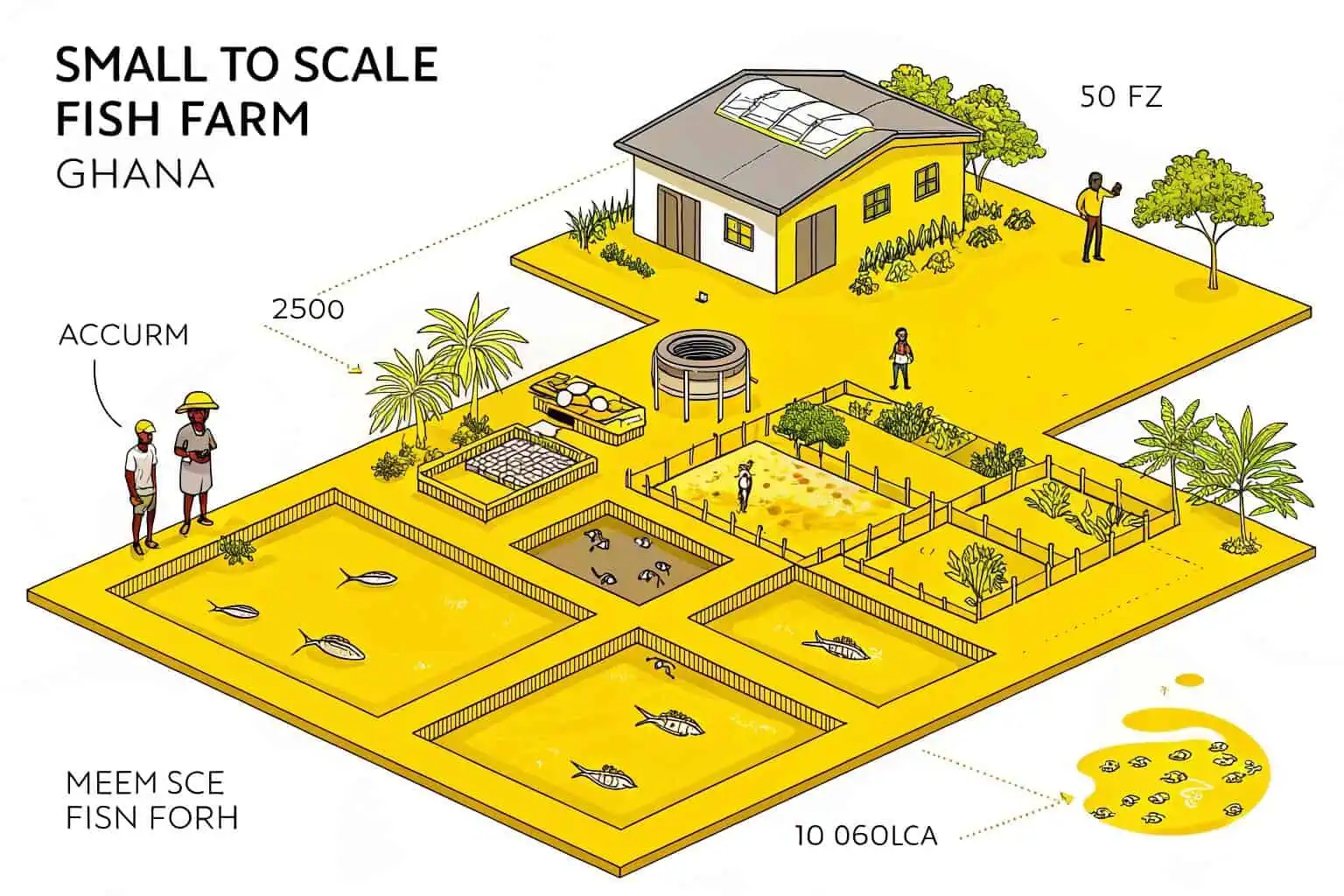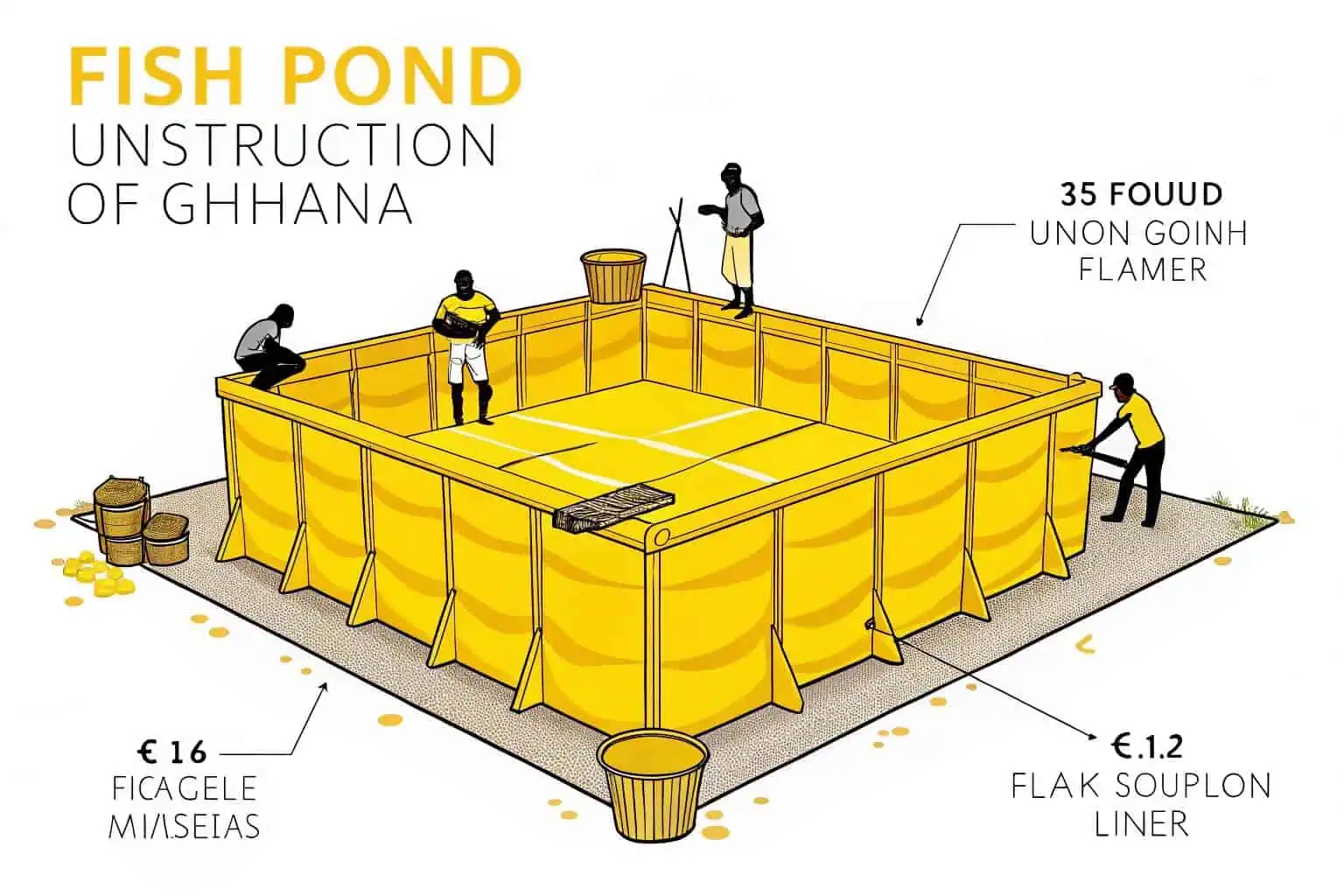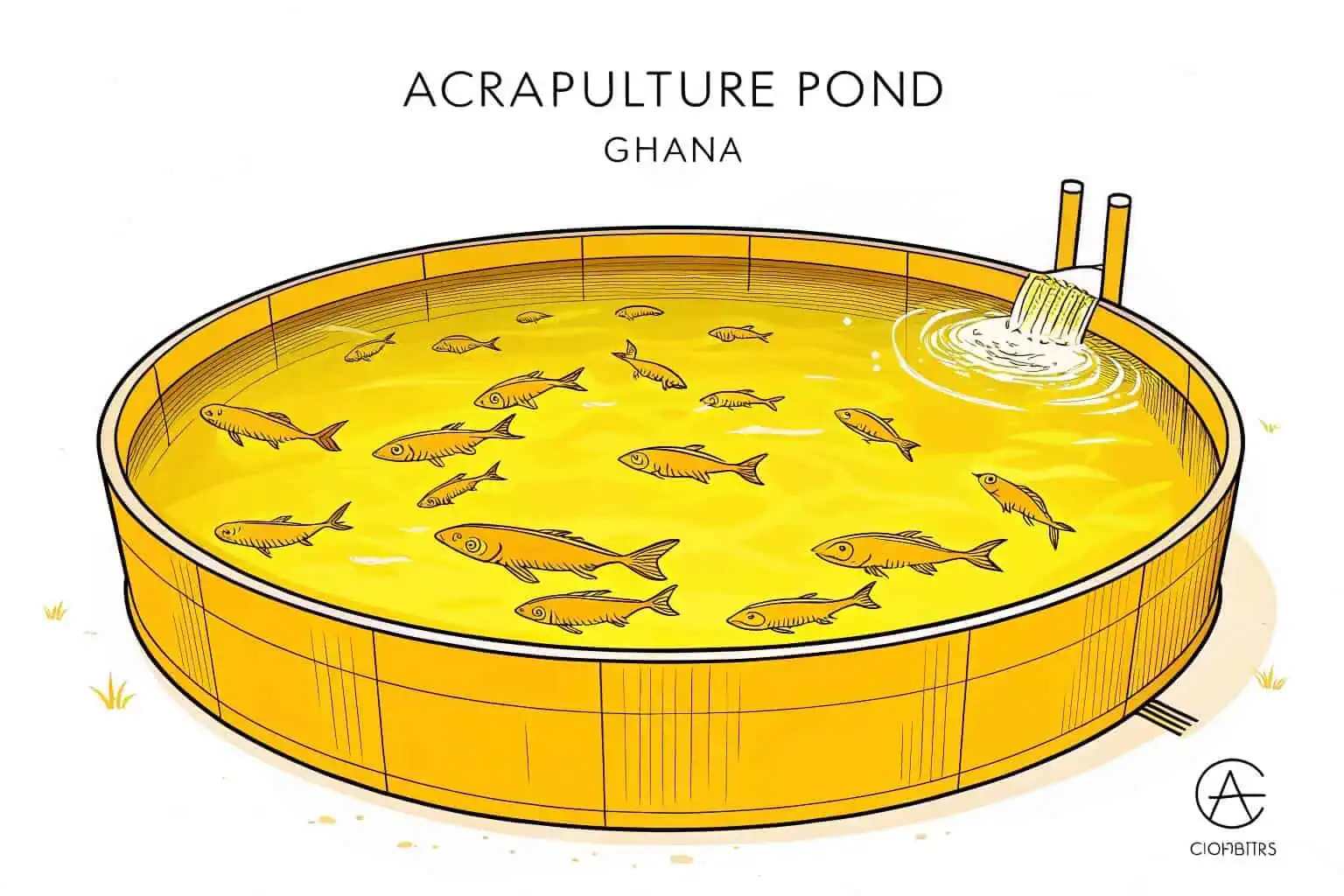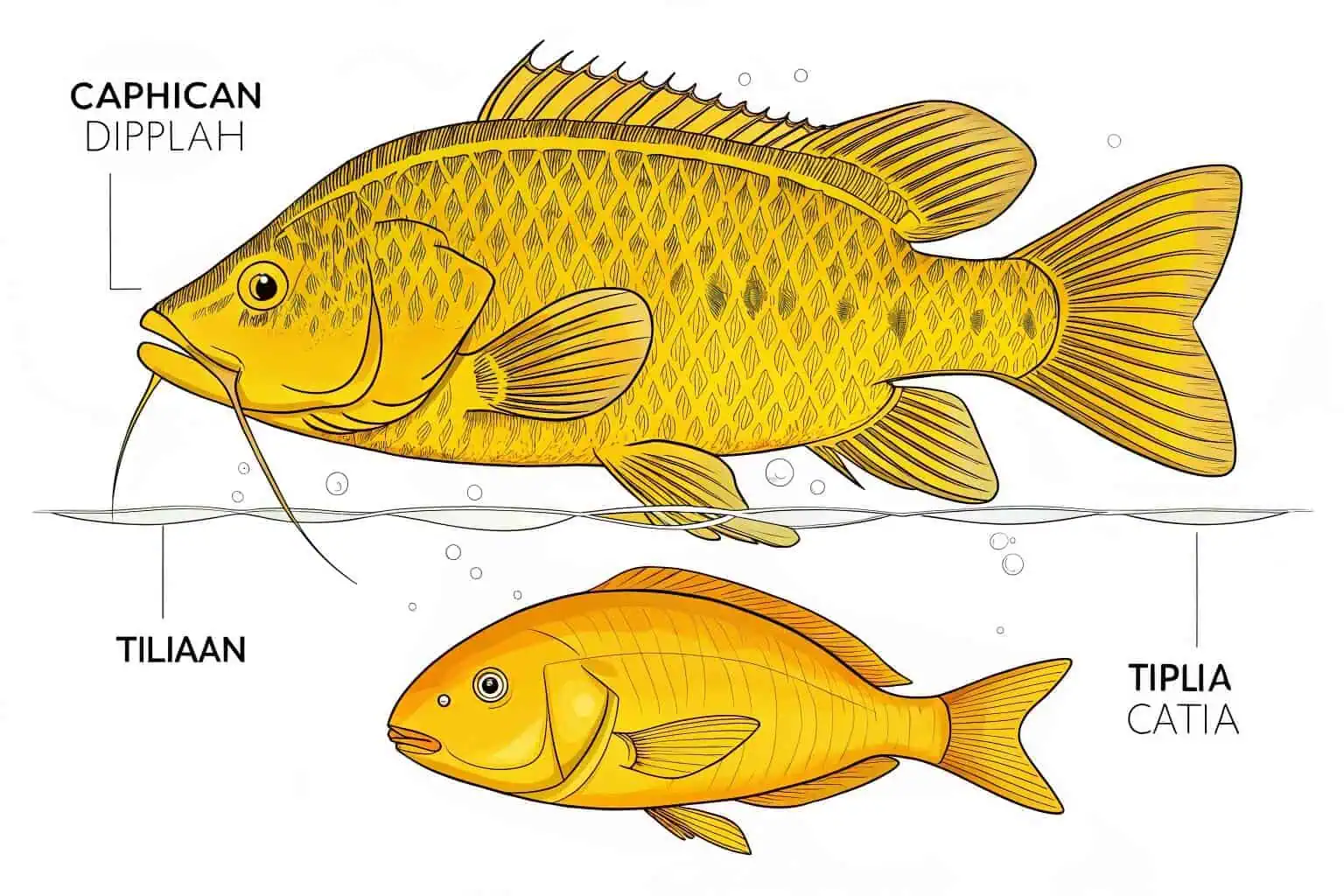How much does it cost to build a fish pond in Ghana?
Struggling to find clear cost information for starting your fish farm in Ghana? It's a common hurdle. Many aspiring farmers get stuck on initial investment numbers, delaying their dreams.
Building a fish pond in Ghana can range from a few thousand to tens of thousands of Ghana Cedis, depending on size, materials, and labor. Key factors include excavation, pond type (e.g., earthen, concrete, or Bancy's flexible PVC tanks), and additional infrastructure like water systems.

Understanding the breakdown of these costs is crucial for planning your aquaculture venture. Let's dive deeper into what influences these expenses and how you can make informed decisions for your fish farming project in Ghana. As someone who's seen many projects take off, I can tell you that a clear budget is your first step to success.
How much does it cost to start a fish farm in Ghana?
Dreaming of a fish farm but worried about the startup capital? Many potential Ghanaian fish farmers face this initial financial puzzle, unsure where to begin with budgeting.
Starting a fish farm in Ghana involves more than just pond construction; costs include land acquisition or lease, permits, fingerlings, feed, labor, and equipment. A small-scale farm might start from GHS 10,000-GHS 50,000, while larger operations require significantly more.

To truly grasp the investment, let's break down the essential components. I remember when I first advised a small community project; we meticulously listed every potential cost, from the shovels for digging to the first batch of Tilapia fingerlings1. This detailed approach helped them secure funding and avoid surprises.
Land Acquisition and Preparation
Securing suitable land2 is your first major expense. Costs vary wildly based on location (urban vs. rural) and land size. Preparation involves clearing, leveling, and ensuring a reliable water source. Sometimes, existing agricultural land can be repurposed, which might save costs. For instance, a client of mine found an underutilized plot near a river, drastically cutting down their water access expenses.
Pond Construction and Type
The type of pond significantly impacts cost. Earthen ponds are generally cheaper to excavate but may require more maintenance. Concrete ponds are durable but more expensive upfront. At Bancy, we offer collapsible PVC fish tanks3, which provide a flexible and often more cost-effective alternative, especially for those starting out or needing mobility. These tanks, like our popular galvanized pipe fish tanks or even the simpler plastic tube fish tanks, can be set up quickly.
Essential Equipment and Infrastructure
Beyond the pond itself, you'll need equipment. This includes nets, aerators (especially for higher stocking densities), water testing kits4, and possibly a small storage facility for feed. For larger farms, a dedicated water pump and filtration system might be necessary. I always advise clients to invest in quality, durable equipment5 from reliable suppliers like Bancy to reduce long-term replacement costs.
| Expense Category | Estimated Cost Range (GHS) - Small Scale | Key Considerations |
|---|---|---|
| Land (Lease/Purchase) | 5,000 - 20,000+ | Location, size, water access |
| Pond Construction | 3,000 - 15,000 | Type (earthen, concrete, PVC), size |
| Fingerlings (e.g. Tilapia) | 500 - 2,000 (per 1000) | Species, supplier quality |
| Fish Feed (Initial) | 1,000 - 5,000 | Quality, quantity, type (starter, grower) |
| Basic Equipment | 1,000 - 5,000 | Nets, containers, basic water testing |
| Permits & Licenses | 200 - 1,000 | Varies by district |
How much does it cost to build a fish pond?
Wondering about the specific cost of the pond itself? The price tag for just the fish pond construction can be a significant portion of your initial outlay, and it's often underestimated.
Building a fish pond, separate from other farm startup costs, can range from GHS 2,000 for a small, simple earthen pond to over GHS 30,000 for a larger, concrete-lined one. Bancy’s collapsible PVC tanks offer a mid-range, durable option.

The actual construction involves several stages, each with its own cost implications. I've seen projects where cutting corners on pond construction6 led to bigger problems later, like leakages or structural issues. It’s better to invest wisely at this stage.
Excavation and Earthworks
For earthen ponds, excavation7 is the primary cost. This depends on the soil type, pond size, and depth. Machine hire (excavators, bulldozers) and labor will be your main expenses here. If the land is rocky or has difficult terrain, costs can increase. A farmer I worked with in the Ashanti region had to deal with laterite soil, which was harder to dig but provided good pond wall stability once done.
Pond Lining and Materials
If you opt for a lined pond to prevent water seepage and ensure easier cleaning, the material choice is key. Concrete lining is robust but costly. High-density polyethylene (HDPE) liners8 are common. Our Bancy PVC fish tanks, for example, use durable PVC tarpaulin, often with options like galvanized steel frames (either pipe or sheet based) for support, offering a balance of durability and cost-effectiveness. The thickness of the PVC (we offer 0.6mm to 1.8mm) also influences price and longevity.
Inlet, Outlet, and Drainage Systems
Proper water management9 is vital. This means constructing inlets for fresh water, outlets for regular water exchange, and an effective drainage system10 for harvesting and cleaning. The complexity of these systems, including pipes, valves, and filters, will add to the cost. I always emphasize to my clients at Bancy that a well-designed water system is non-negotiable for healthy fish and efficient farm management.
| Pond Component | Cost Factor | Example Impact |
|---|---|---|
| Excavation | Soil type, pond size, labor/machine rates | Clay soil is easier to work with than rocky soil, reducing excavation time. |
| Lining (if applicable) | Material (Concrete, HDPE, PVC) | Concrete is most expensive; Bancy PVC tanks offer a durable, mid-cost option. |
| Structural Support | Frame type (for tank systems) | Galvanized steel frames (pipe or sheet) for Bancy tanks add to cost but ensure stability. |
| Water Inlet/Outlet | Pipes, valves, filtration complexity | Simple gravity-fed systems are cheaper than pumped, filtered systems. |
| Labor | Skilled vs. unskilled, local rates | Experienced pond builders may charge more but can prevent costly mistakes. |
What size pond for 1,000 fish?
Planning to raise 1,000 fish but unsure about the pond size? This is a critical question, as overcrowding stresses fish and stunts growth, while too much space can be inefficient.
For 1,000 Tilapia or Catfish (common in Ghana), a pond size of 100 to 200 square meters with an average depth of 1 to 1.5 meters is generally recommended for semi-intensive systems. This translates to roughly 100,000 to 300,000 liters of water.

However, the ideal size isn't just about water volume; it's about surface area, depth, and the type of fish. I recall a new farmer who tried to stock 1,000 catfish11 in a pond that was too small and shallow. The fish suffered, and yields were poor. We helped him redesign for better results.
Species-Specific Requirements
Different fish have different spatial needs. Tilapia12 can tolerate higher stocking densities than catfish in some systems. For example, in a well-managed system with good aeration, you might stock 5-10 Tilapia per square meter. Catfish might need a bit more room or specific depth considerations, especially if they are air-breathing types.
Water Depth and Quality Management
A pond depth13 of 1-1.5 meters is typical. Deeper ponds can offer more stable water temperatures, but also make harvesting more challenging. Shallower areas can be good for breeding if that's part of your plan. Crucially, the ability to manage water quality (oxygen levels, waste removal) is linked to stocking density. More fish in a smaller space requires more intensive management, like aeration and frequent water exchange.
System Type: Extensive vs. Intensive
In extensive systems (lower stocking density, less supplementary feed), you'll need a larger pond per 1,000 fish. In semi-intensive or intensive systems (higher density, reliant on complete feeds and often aeration), you can use smaller ponds. Our Bancy collapsible tanks14 are well-suited for semi-intensive systems, allowing controlled environments. For instance, a 50,000-liter Bancy tank could comfortably house a significant number of fingerlings before they are moved to larger grow-out ponds, or even grow out a smaller batch to market size.
| Fish Species | Recommended Density (fish/m²) | Approx. Pond Area for 1000 Fish (m²) | Approx. Volume (1.2m depth, Liters) |
|---|---|---|---|
| Tilapia | 5 - 10 | 100 - 200 | 120,000 - 240,000 |
| Catfish | 4 - 8 | 125 - 250 | 150,000 - 300,000 |
Which fish is best for fish farming in Ghana?
Choosing the right fish species is a cornerstone of successful fish farming in Ghana. Are you wondering which species will thrive and bring good returns in the local conditions?
Tilapia and African Catfish are overwhelmingly the most popular and generally considered the best for fish farming in Ghana due to their hardiness, fast growth rates, market demand, and adaptability to local climatic conditions.

While these two are champions, the "best" can also depend on your specific goals, resources, and market access. I've seen farmers succeed with other species too, but Tilapia and Catfish offer a solid starting point. My experience in the Ghanaian market15 shows a consistent demand for both.
Tilapia (Oreochromis niloticus)
Tilapia is a hardy fish that can tolerate a range of water conditions. They are relatively easy to breed, grow fast, and feed on a variety of food, including pellets and natural pond organisms. The market demand in Ghana16 is consistently high. They are suitable for various culture systems, from earthen ponds to tanks like the ones we provide at Bancy. Their resilience makes them a good choice for beginners.
African Catfish (Clarias gariepinus)
Catfish are also very popular in Ghana. They are known for their rapid growth17 and ability to tolerate low oxygen levels due to their air-breathing capabilities18. This makes them suitable for higher stocking densities. They have a good market price and are a local delicacy. However, they can be cannibalistic if not sorted by size, and their feed requirements can be more specific (higher protein) than Tilapia.
Other Potential Species
While less common for large-scale commercial farming, other species are sometimes considered. These might include some ornamental fish19 if a niche market is targeted, or other local species if specific conditions and market links exist. However, for food fish production aiming at the broader Ghanaian market, Tilapia and Catfish remain the top recommendations due to established farming practices and consumer preference. When I advise new entrants, I almost always suggest starting with one of these two to build experience before diversifying.
| Species | Growth Rate | Hardiness | Market Demand (Ghana) | Key Considerations |
|---|---|---|---|---|
| Tilapia | Fast | High | Very High | Easy to breed, adaptable to various feeds. |
| African Catfish20 | Very Fast | High | Very High | Air-breather, higher protein feed, potential cannibalism. |
| Other Species | Varies | Varies | Niche/Lower | Requires specific knowledge, market research essential. |
Conclusion
Starting a fish farm in Ghana involves careful planning and understanding costs. With the right approach and quality products like Bancy's fish tanks, success is achievable.
-
Understanding Tilapia fingerlings is crucial for successful aquaculture projects, ensuring proper growth and sustainability. ↩
-
Exploring this resource will provide insights into effective strategies for acquiring land that meets your agricultural needs. ↩
-
Explore the advantages of collapsible PVC fish tanks for flexibility and cost-effectiveness in aquaculture. ↩
-
Explore this link to find reliable water testing kits that ensure optimal pond conditions for your fish farming. ↩
-
Understanding the significance of investing in quality equipment can save you money and enhance your farm's productivity. ↩
-
Understanding best practices in pond construction can help avoid costly mistakes and ensure a durable structure. ↩
-
Understanding excavation costs is crucial for budgeting your earthen pond project effectively. Explore this link for detailed insights. ↩
-
Explore the advantages of HDPE liners for ponds, including durability and cost-effectiveness, to make an informed choice. ↩
-
Explore this resource to understand essential strategies for maintaining healthy aquatic environments and optimizing farm operations. ↩
-
Learn how a well-designed drainage system can enhance fish health and farm productivity, ensuring sustainable aquaculture practices. ↩
-
Learn the best practices for stocking catfish to ensure healthy growth and high yields in your aquaculture efforts. ↩
-
Understanding Tilapia's spatial needs can help optimize aquaculture practices and improve fish health and yield. ↩
-
Understanding the ideal pond depth can help optimize fish health and breeding conditions, ensuring a successful aquaculture operation. ↩
-
Explore the advantages of Bancy collapsible tanks for creating controlled environments in fish farming, enhancing growth and management. ↩
-
Learn about the trends and demands in the Ghanaian market to make informed decisions in aquaculture. ↩
-
Understanding the market demand can help you make informed decisions about tilapia farming and investment opportunities. ↩
-
Understanding the benefits of rapid growth can help optimize catfish farming practices and improve yield. ↩
-
Exploring air-breathing capabilities can reveal how catfish thrive in low-oxygen environments, enhancing farming efficiency. ↩
-
Discover niche market potentials for ornamental fish, which can diversify your aquaculture business and increase profitability. ↩
-
Learn about the unique benefits of African Catfish, including its fast growth and high protein content, to enhance your farming strategy. ↩